MOC ZÁJÍMAVÝ




Battle of Hradec Kralove (1866)
Categories: Years of war and revolution
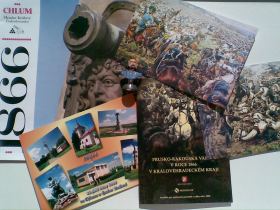
The Battle of Hradec Králové can also be found under the name Battle of Chlum or Battle of Sadova. However, this does not detract from the fact that it was the decisive battle of the Prusso-Austrian War, which took place on July 3, 1866. It can be easily described as one of the bloodiest battles in our history. The area of the battlefield is located about ten kilometres from Hradec Králové towards Hořice and Jičín.
The Prussian army started its advance towards Bystřice at six o'clock in the morning on 3 June 1866. However, at several crossings of the Bystřice River, fighting broke out between the advance units of both armies. Shortly after the first clash, cannon fire began to thunder to prevent dangerous bayonet attacks. At the same time, the Prussian Elbe Army was advancing towards Nechanice.
The main Prussian attack was directed at the centre of the Austrian positions. The troops of the 1st Prussian Army were already in the valley of the Bystřice River between seven and eight o'clock in the morning, and without stopping they began their advance towards Lipa and Chlum. They crossed the Sadová and occupied the Holá forest, The Prussian army was about to attack at 10 a.m., but the Austrian artillery opened fire at the right time and stopped the Prussian advance for hours. The left wing of the Austro-Saxon army ordered a retreat before the Elbe army to the positions at Probluz and Primus. On the right flank they advanced through Venice to the forest of Svib, which they captured and penetrated to Chisteves. At half past nine the Austrian army counter-attacked. The Prussians were pushed from Čistěvs to the Swib forest, for which a bloody fight broke out. The fierce struggle for the Svíb forest is evidenced by the 40 monuments and marked military graves in this forest.
Around twelve o'clock the Prussian army was pushed out of this place. The cheering of the Austrian soldiers sounded far away, the military bands played the Imperial Anthem and the Radetzky March. The jubilation did not last long, however, as the surprising rapid advance of the 2nd Prussian Army from the north forced the Austrian army back to its eastern positions. By this point, the good work of the artillery was evident, with shells falling as far as where the King and his staff were standing.
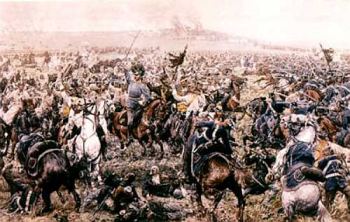
Before the second hour of the afternoon had passed, the 2nd Prussian Army attacked towards Chlum. Then a fierce battle broke out for the strategic place, which was the Chlum hill. The Prussians were more successful, repulsed the attack of the Austrian advances and penetrated to the village of Lipa. In 20 minutes the 1st Corps of the Austrian Army lost ten thousand men, about half its strength, in dead, wounded and prisoners. The place through which the main direction of the attack was led was later called the " Knot of the Dead". Here the attack took place, which literally turned into a slaughter.
Benedek was forced to give the order to retreat between 4 and 5 p.m. The last phase of the battle had begun. The Prussian leadership recognized that the enemy was beginning to clear his positions, and it was therefore an opportune moment to consummate the victory of vigorous pursuit. In addition, the Elbe and 1st Prussian armies joined the offensive. The retreat of the fleeing troops was covered by cavalry. One of the last clashes took place at the village of Střezetice, where units of the Austrian cavalry clashed with Prussian cavalrymen in one of the last great cavalry battles in history. The Austrian cavalry rescued the infantry of the Northern Army, which finally managed to escape from the threatening encirclement.
The Battle of Hradec Králové created a completely new situation and therefore forced new diplomatic decisions on both sides. The Austrians immediately offered the Prussians a truce on 4 July, which was refused.
The unfortunate Austrian commander Benedek was brought to trial after the lost war, but the proceedings were stopped by order of the Emperor. He was retired and spent the rest of his life in Graz.
The Prussian army numbered 220,000 men, of whom 9,900 were killed and wounded. In contrast, the combined Austrian and Saxon army fought with 215,000 men, of whom 43,000 were killed or wounded in battle. There are several myths surrounding the battle, including the claim that the Battle of Hradec Kralove was the largest battle of the 19th century, which was the Battle of Leipzig in 1813. Other fallacies include the cause of the defeat of the Austrian army. The main reason was errors in the tactics of the Austrian army. 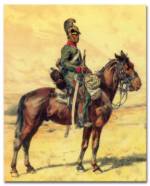 The Prussians advanced in a so-called swarm, that is, dispersed and used the uneven terrain and vegetation for cover. While the Austrian soldiers advanced in close columns, as they had learned to do during the Napoleonic Wars and which had helped the French in Italy a few years earlier. The Austrians thus completely negated the advantage offered by long-range precision weapons. And this is where we get the fallacy, many sources say that Prussia won because they had the better weapon (the legendary Dreys needle gun). This is not true. While the Dreys rifle was an explosive rifle, its advantage over the Austrian 1854 and 1862 Lorenz system rifle was the ability to reload in any position and use a single cartridge. These advantages, however, were not enough to win a battle. The Austrian rifle, which could only be loaded standing up, was more accurate and had twice the effective range. Experienced riflemen, which were abundant in the Austrian army, because it was still a professional army, unlike the Prussian national army, i.e., the assembled They were able to reload relatively quickly, and the short Lorenz rifles, intended for special corps, could also be loaded lying down after some practice.
The Prussians advanced in a so-called swarm, that is, dispersed and used the uneven terrain and vegetation for cover. While the Austrian soldiers advanced in close columns, as they had learned to do during the Napoleonic Wars and which had helped the French in Italy a few years earlier. The Austrians thus completely negated the advantage offered by long-range precision weapons. And this is where we get the fallacy, many sources say that Prussia won because they had the better weapon (the legendary Dreys needle gun). This is not true. While the Dreys rifle was an explosive rifle, its advantage over the Austrian 1854 and 1862 Lorenz system rifle was the ability to reload in any position and use a single cartridge. These advantages, however, were not enough to win a battle. The Austrian rifle, which could only be loaded standing up, was more accurate and had twice the effective range. Experienced riflemen, which were abundant in the Austrian army, because it was still a professional army, unlike the Prussian national army, i.e., the assembled They were able to reload relatively quickly, and the short Lorenz rifles, intended for special corps, could also be loaded lying down after some practice.
Another alleged reason for the defeat was poor maps and field reconnaissance. But even tactical and strategic mistakes were not the cause of the crushing defeat of the Austrian army. It was a consequence of the overall economic and political situation. At Hradec Kralove, a more progressive and predatory system prevailed. This was reflected in the high level of the officer corps.
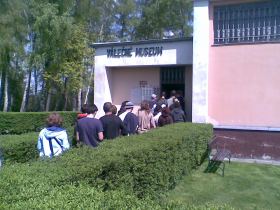 On the occasion of 70. anniversary of the battle, the central area of the battlefield at the top of the Chlum hill was the site of the 44th anniversary of the battle, initiated by a member of the Committee for the Preservation of Monuments of the War of 1866, Mr. Josef Volf from Máslojed.000 CZK, the so-called war museum was built. The historical line of the exposition gives a basic overview of the main war events through contemporary pictorial documents.events outside the territory of our country in the summer of 1866 as well as the first battles on the territory of north-eastern Bohemia (near Česká Skalice on 28. June, the clash at Mnichovo Hradiště on 27 June, the Prussian attack at Trutnov on 27 June, the street fighting in Jičín on 29 June and the operation of the hunters of the Saxon
On the occasion of 70. anniversary of the battle, the central area of the battlefield at the top of the Chlum hill was the site of the 44th anniversary of the battle, initiated by a member of the Committee for the Preservation of Monuments of the War of 1866, Mr. Josef Volf from Máslojed.000 CZK, the so-called war museum was built. The historical line of the exposition gives a basic overview of the main war events through contemporary pictorial documents.events outside the territory of our country in the summer of 1866 as well as the first battles on the territory of north-eastern Bohemia (near Česká Skalice on 28. June, the clash at Mnichovo Hradiště on 27 June, the Prussian attack at Trutnov on 27 June, the street fighting in Jičín on 29 June and the operation of the hunters of the Saxon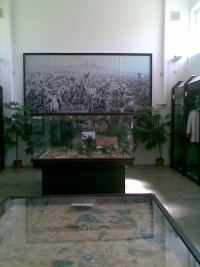 army at Jičín on 29 June). Furthermore, the actual course of the battle at Chlum near Hradec Králové, the victorious position of the Prussian army, theand the subsequent retreat of the Austrian army after the lost battle through the Hradec Králové fortress to Česká Třebová 6. July, the clash of the Saxon and Prussian cavalry in Senica on 21 July, the attack of the Prussian cuirassiers on the Austrian artillerymen at Tovačov on 15 July and the ambush of Benedek and his staff at Přerov on 15 July. The war events of the summer of 1866 culminated in the declaration of an armistice during the fighting at Lamač on 22 July and peace negotiations at the Mikulov Castle on 22 July.
army at Jičín on 29 June). Furthermore, the actual course of the battle at Chlum near Hradec Králové, the victorious position of the Prussian army, theand the subsequent retreat of the Austrian army after the lost battle through the Hradec Králové fortress to Česká Třebová 6. July, the clash of the Saxon and Prussian cavalry in Senica on 21 July, the attack of the Prussian cuirassiers on the Austrian artillerymen at Tovačov on 15 July and the ambush of Benedek and his staff at Přerov on 15 July. The war events of the summer of 1866 culminated in the declaration of an armistice during the fighting at Lamač on 22 July and peace negotiations at the Mikulov Castle on 22 July.
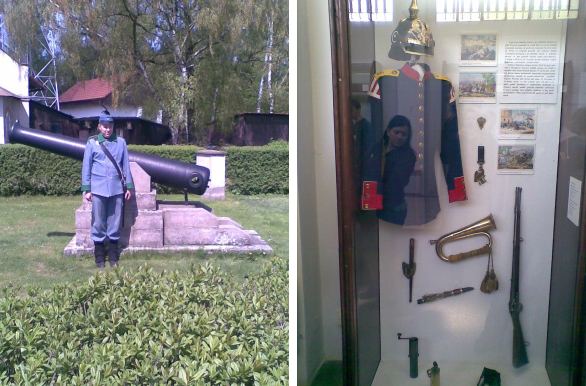
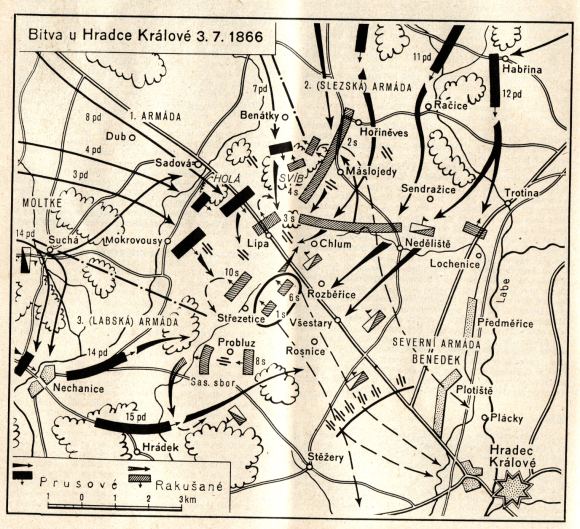
Photo and text: internet, viky
You can search for artefacts from this period using our metal detectors.
The article is included in categories:






